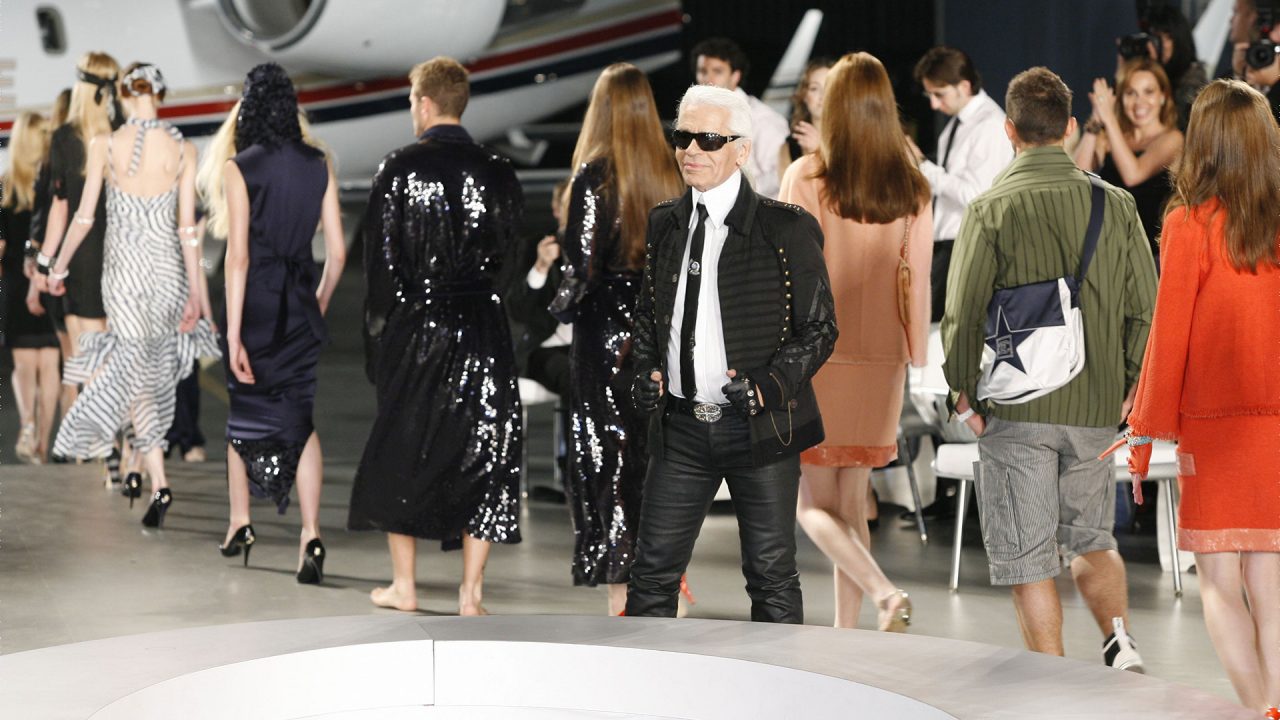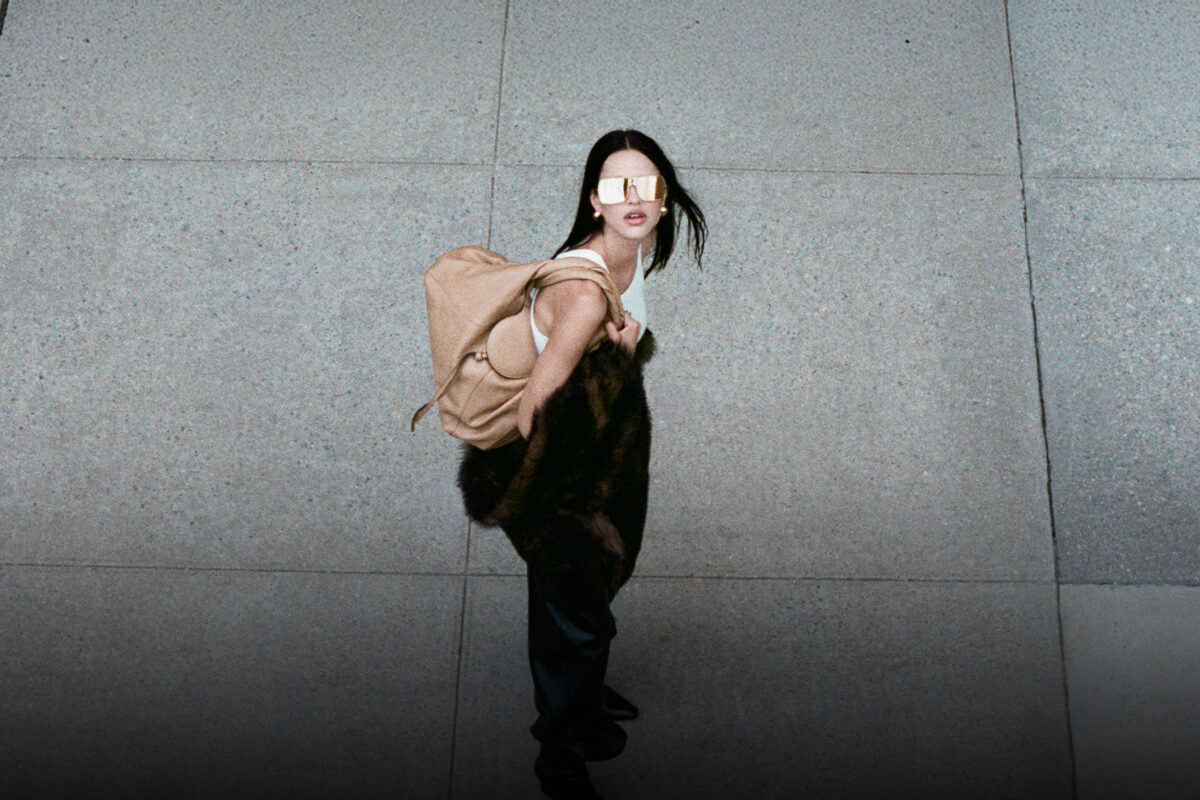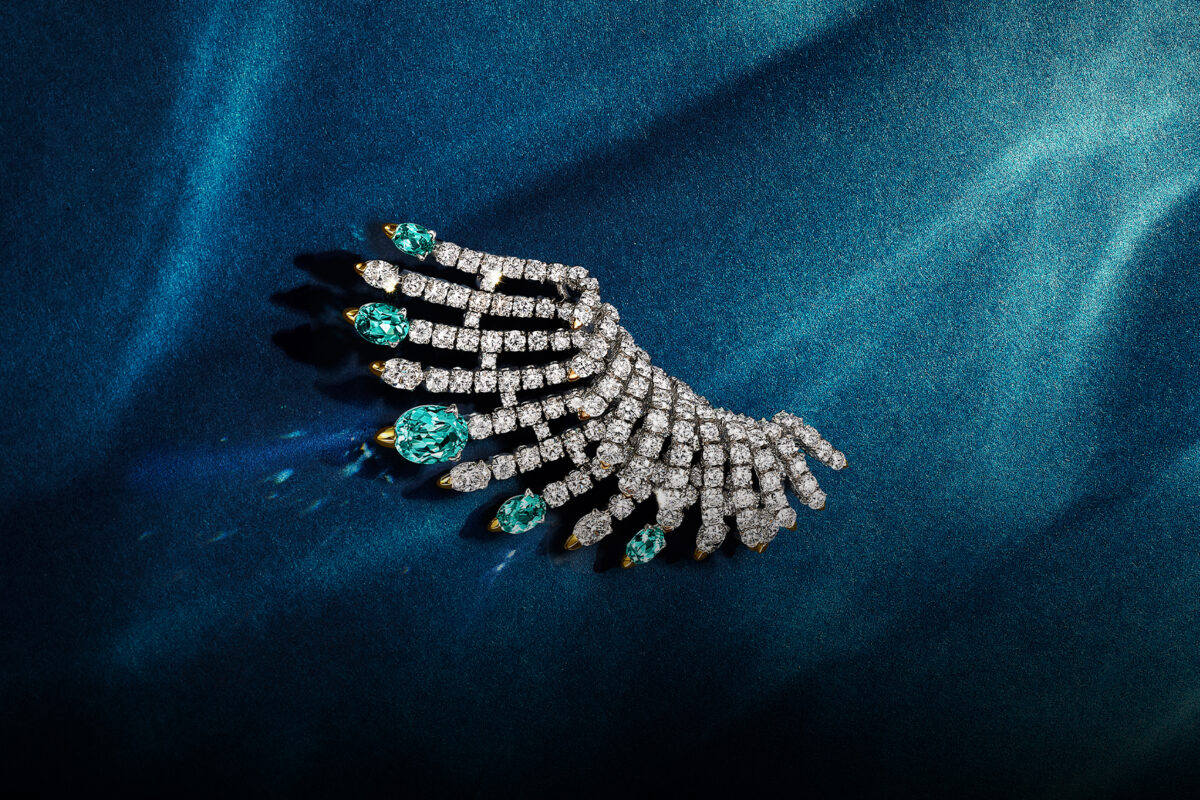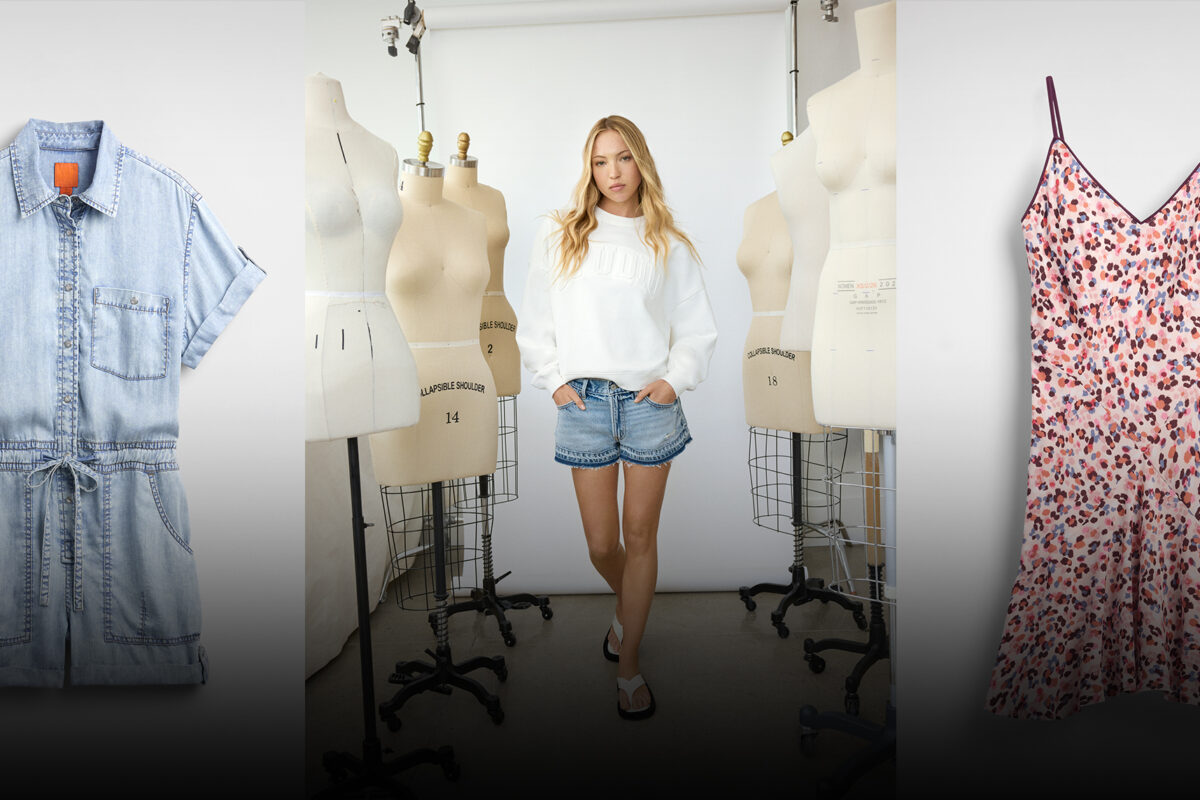As we bid farewell to Karl Lagerfeld, we look back on his time spent in his beloved Golden State
Words by CHRISTINA BINKLEY
Designer Karl Lagerfeld (1933-2019), who died in February after a battle with pancreatic cancer, had a lifelong love affair with the sandy beaches and endless asphalt boulevards of Southern California. Raised in the damp climes of northern Germany — his mother telling him that he was a homely child — he became obsessed with beauty and architecture and chased the sunshine. California supplied sun, muses and Schindlers (Lagerfeld argued that Rudolph Schindler was one of the world’s greatest architects) in quantity.
He blew into Los Angeles on private jets, arriving with an entourage so deep he had to be spotted by the remarkable head of powder-white hair, slung back in a Paul Revere ponytail, that was the touchstone for his identity in his final decades. He chose to sleep at the most golden age of all Hollywood-era hotels, The Beverly Hills Hotel, with its pink bungalows and famed Polo Lounge, where he was generally the biggest star among stars. At the hotel, he was never seen out of costume and — ever the gentleman — he was a beloved guest.
He chose to sleep at the most golden age of all Hollywood-era hotels, The Beverly Hills Hotel, with its pink bungalows and famed Polo Lounge, where he was generally the biggest star among stars
“He was lovely to all the employees and was always impeccably dressed,” says Steven Boggs, the hotel’s long-serving director of guest relations. “We always looked forward to his stays with us.” Lagerfeld’s trips to California reflected the work ethic that was the foundation of his career. He often juggled work for the three fashion brands for which he was responsible — Chanel, Fendi (alongside scion of the Roman dynasty Silvia Venturini Fendi) and his eponymous label — as well as ancillary creative assignments, working in a whirlwind of assistants, muses and caretakers who, in turns, wielded both his cellphone and his glass of Diet Coke on ice.
Lagerfeld died at the American Hospital of Paris in February at the age of 85, leaving one of the most storied legacies in fashion. The most famous — and possibly the most beloved — fashion designer of the latter 20th century, and the early 21st, he led design at Fendi since 1965, a reign unmatched for a designer of a brand that was not originally his own. Like a tenured professor or a Supreme Court justice, he held a lifetime contract as creative director of Chanel, a job he took on in 1983. He led Chanel into a tweed bouclé future that adroitly encompassed punk rebellion and grandmotherly tea party socials in a way that might have cheered the rambunctious founder, Coco Chanel. Under his helm it became one of the biggest luxury goods brands in the world, worth an estimated $10 billion.
While fashion insiders for years speculated about who might take Chanel’s reins from him — Hedi Slimane? Phoebe Philo? — in the end, the Wertheimer family, who owns Chanel, went with the designer least likely to veer from Lagerfeld’s approach, Virginie Viard, the brand’s creative studio director and his close collaborator for more than 30 years, whom he once called his “right and left” hand.
Lagerfeld jet-setted around the world so extensively it could be easy to overlook the impact that California had on his work — and alternately, the impact that his work had on Southern California’s relation to fashion.
The designer’s first trip to The Golden State took place on a family holiday from Hamburg, Germany. Lagerfeld, who famously obfuscated his age, claimed to have been 12 at the time. That would place the trip in 1944 or 1945 — an unlikely moment for a German family to have vacationed in the United States. But he also described the era of his first visit as the 1950s, which would have made him a teenager — an impressionable age at which the sights and sounds of Hollywood in the era of Gene Kelly and Alfred Hitchcock would have been a dramatic contrast to postwar, bombed-to-bits Hamburg.
“California was the place to see the American dream that you saw in magazines,” Lagerfeld once told C. “In the ’50s, Europe did not look the way it does now. There was no war in California — it looked like an ideal life.”
Years later, Lagerfeld would communicate the aspirations of the Parisian Chanel with a flock of honeyed supermodels who became mainstays in his collections and themselves settled in California or hailed from the state — Christy Turlington Burns, Cindy Crawford, Tatjana Patitz, Amber Valletta.
In 2007, when the globe-trotting Lagerfeld was considering creating an eponymous international hotel chain, he reached out to one of Southern California’s pre-eminent hospitality experts, Ali Kasikci, famed former managing director of The Peninsula Beverly Hills. Kasikci recalls the proposal’s uniquely Lagerfeldian vision of luxury: “His vision of a hotel room was basically a bathroom. It was a giant Turkish bath in the midst of the hotel room.”
Lagerfeld told C in 2006 that despite his fondness for the architecture of Schindler, he had yet to visit the homes in Los Angeles — he was always over-scheduled and failed to find the time. Priscilla Fraser, director of the MAK Center for Art and Architecture at the Schindler House, says she can understand the fashion designer’s affinity for the architect. Both men conveyed “decadence with an exacting precision,” and both responded to the needs of the client rather than imposing personal rules. It’s one of the reasons Lagerfeld masterfully designed disparate brands.
Lagerfeld helped shift the world’s view of Los Angeles from race riots and surfwear to a global art hub and trend incubator. In 2007, he invited the industry’s fashion elite to an airplane hangar at the Santa Monica Airport to view Chanel’s Resort collection. They arrived in droves to be seated in a luxurious airport lounge at white banquettes as models streamed from two airplanes marked with the Chanel logo that pulled up in a roar of engines. His muses walked a runway that included a conveyor belt that sluiced through the banquet seating where the likes of Demi Moore, Jessica Alba, Eva Mendes, Ashley Olsen and Mary-Kate Olsen (in their pre-The Row years) could be found. Conveniently, stars could take a limo rather than a red-eye to attend, making it one of the most see-and-be-seen fashion shows of any city in recall.
Stylist Tanya Gill, who had been working with Chanel for her client, Kate Winslet, recalls the utter shock of encountering a European luxury brand and its crowd on her home turf. “I’d never been to a show at a location away from Paris with a major European designer,” Gill says. “It was so new and exciting.”
That Chanel Resort show reverberated with the Euro fashion set. In the following decade, Burberry, Saint Laurent, Tom Ford, Stella McCartney and Christian Dior paraded collections through Southern California. Hedi Slimane, Lagerfeld’s friend and protege, subsequently moved to Los Angeles, buying a home in Beverly Hills and later designing Saint Laurent from a studio in West Hollywood, drawing on L.A.’s skate and music scenes to inspire collections that made Saint Laurent an effervescent jewel in the Kering crown alongside Gucci.
Devoutly cynical, Lagerfeld suggested he didn’t altogether buy the Southern California fantasy he was promoting. “Seen from Europe, L.A. is the idea of easy, pleasant life, of light, sunshine, fun and all that,” he told C. “Maybe the reality of daily life in L.A. is not that glamorous, but I don’t care.”
Hero Image: Gregorio Borgia/Shutterstock
This story originally appeared in the April 2019 issue of C magazine.




